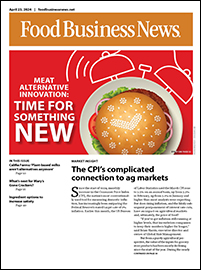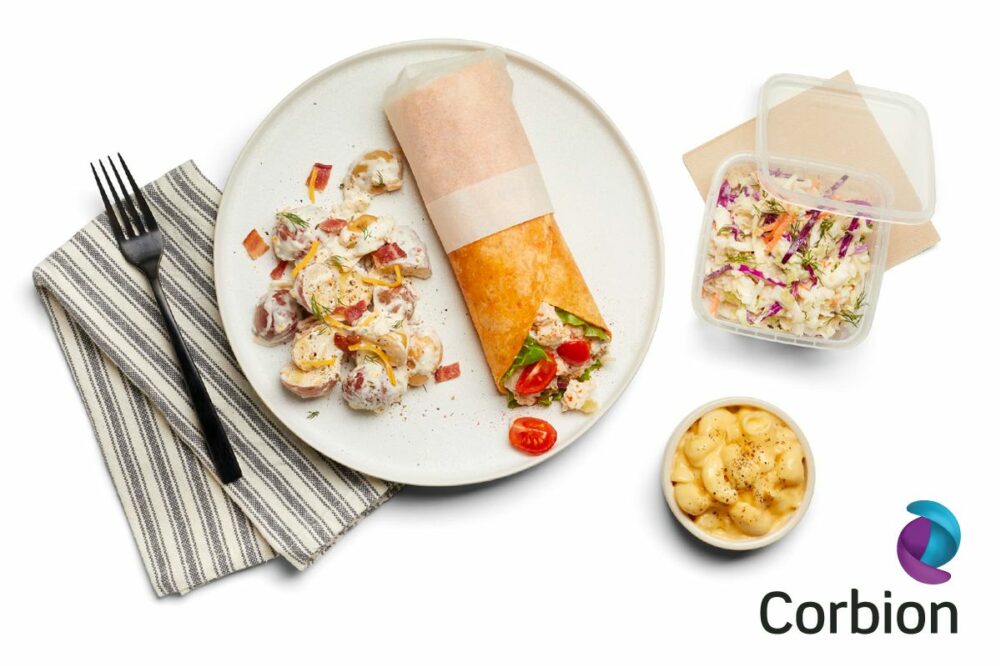
| Fresh ideas. Served daily. Subscribe to Food Business News' free newsletters to stay up to date about the latest food and beverage news. |
Subscribe |


Today’s food manufacturers face a unique challenge—how to meet growing consumer demand for simpler, cleaner labels while ensuring products remain safe and fresh throughout their shelf life. According to the International Food Information Council (IFIC), 63% of consumers are paying more attention to ingredient lists, with an increasing preference for natural sweeteners, flavors, and preservatives. At the same time, over 42% of consumers acknowledge that adding preservatives can help reduce food waste.
 Photo: Corbion
Photo: CorbionThis dual expectation of transparency and functionality in food products may seem daunting, but it is entirely achievable with the right approach. Here's how food manufacturers can turn these challenges into opportunities by leveraging innovative solutions and collaborative partnerships.
Trends in Consumer Expectations
The movement toward “label-friendly” products is undeniable. A recent IFIC survey found that six in ten Americans consider ingredients when choosing foods to buy. Most consumers seek out “clean” ingredients—those perceived as natural, fresh, or minimally processed. For brands, this presents an opportunity to align product offerings with evolving consumer preferences by adopting clean-label formulations.
The Impact on Brand Perception
Consumers value understandable, straightforward ingredient lists, associating them with trust and transparency. Brands embracing this approach gain a competitive advantage, fostering stronger consumer loyalty and standing out in the market. The transition to cleaner labels goes beyond simply removing conventional, fossil-based additives—it involves replacing them with functional, nature-based alternatives. This approach not only meets the expectations of modern shoppers but also strengthens brand equity over the long term.
Reducing Food Waste
Food waste is a significant issue for manufacturers and consumers alike. Longer shelf life can help reduce product waste at multiple stages—throughout distribution, on retail shelves, and in the home through end-user consumption. For consumers, extended shelf life translates into fewer expired products and more efficient use of their grocery dollars. For manufacturers, it equates to lower expenditures on raw materials, transportation, warehousing, packaging, and energy, in addition to reduced emissions.
Ensuring Safety and Freshness
Preservation is critical for maintaining the product integrity that is so important to customer satisfaction and loyalty. Microbial control is key to guarding against spoilage and pathogens that can compromise freshness and safety. Natural, label-friendly preservation solutions, such as those based on vinegar or other ferments, are increasingly proving to be effective alternatives to synthetic preservatives like sorbates or benzoates.
 Photo: Corbion
Photo: CorbionInnovative Solutions for Dual Benefits
Achieving both a cleaner label and extended shelf life requires a forward-thinking approach. Natural, consumer-friendly preservatives like cultured sugars, cultured dextrose, and vinegar are game-changers. These ingredients align with clean-label goals while providing robust preservation. In addition, fermentation-based solutions can naturally and effectively tackle spoilage without compromising taste or texture.
The Science Behind Preservation Without Compromise
Advanced preservation technologies in the hands of ingredient experts enables food manufacturers to extend shelf life while maintaining the sensory qualities consumers love. For example, ingredients derived from vinegar or cultured sugar prevent microbial growth, ensuring products stay both safe and delicious, all while meeting label transparency expectations.
Expertise Matters
Navigating the complexities of balancing consumer preferences with formulation and operational challenges requires more than just innovative ingredients. Collaborating with partners who offer both technical expertise and strategic guidance can make a significant difference in achieving clean-label and shelf-life goals.
Tailored Solutions for a Competitive Edge
No two manufacturers face precisely the same challenges. Tailored solutions, informed by specific regulatory and operational needs, can often be key to achieving optimal results. Addressing variables like microbial control targets, flavor profiles, and product development timelines enables manufacturers to achieve success while aligning with consumer expectations.
Driving Innovation and Consumer Loyalty
Meeting consumer demand for simple, transparent labels and delivering on operational requirements like extending shelf life may seem at odds, but they can be aligned through today's innovative, nature-based ingredient technologies. Manufacturers who invest in advanced preservation strategies and collaborative partnerships will be well-positioned to thrive in this evolving market.
To stay ahead in an increasingly competitive environment, food producers must embrace transparency, sustainability, and innovation as core principles. These strategies are key to building stronger brand loyalty, reducing waste across the value chain, and delivering high-quality food products that resonate with today’s consumers.
Citations
| Fresh ideas. Served daily. Subscribe to Food Business News' free newsletters to stay up to date about the latest food and beverage news. |
Subscribe |



More than 400 products were introduced at the annual event.

Launches over the last year include white chocolate cookies, Pop’ums pretzel snacks and more.